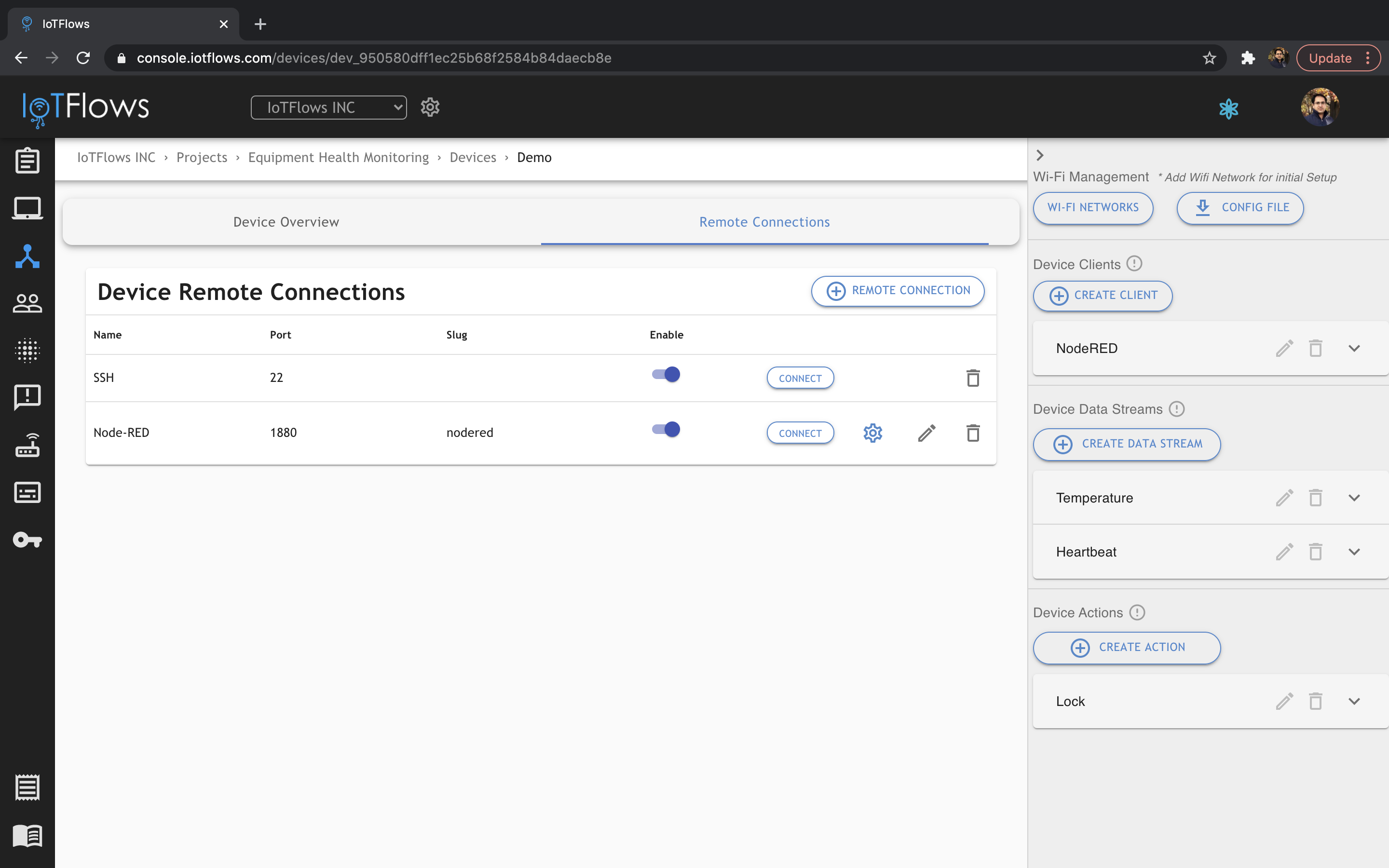Free Android IoT SSH Access: Your Guide To Remote Control
Are you intrigued by the prospect of commanding your smart home or managing your IoT gadgets from the palm of your hand, no matter where in the world you might be? The ability to remotely access and control Internet of Things (IoT) devices via Secure Shell (SSH) on your Android device is not only feasible but also surprisingly accessible, offering a powerful and secure pathway to your connected world.
The proliferation of IoT devices has fundamentally altered how we interact with technology, creating an ecosystem of interconnected devices that enrich our lives, from smart refrigerators to sophisticated industrial sensors. As these devices become more integral, the need to manage and access them remotely has surged. This is where SSH, a secure network protocol, becomes crucial. Think of SSH as a digital key, granting you access to your IoT devices over a secure, encrypted tunnel, ensuring that your commands and data remain safe from prying eyes. It's a protocol that acts like a superhero, allowing you to securely connect to a device over a network. This is where free tools and platforms come into play, turning this complex task into a manageable and accessible endeavor for everyone, from tech enthusiasts to seasoned developers.
To fully appreciate the potential of remote SSH access for IoT devices, consider this: With the right setup, you can troubleshoot a malfunctioning sensor in your home automation system while on vacation, update the firmware of your smart thermostat from the office, or even monitor the performance of a remote server running on an IoT device, all without needing to be physically present. This level of control offers unparalleled flexibility and convenience, significantly streamlining the management of your connected devices.
- Alice Rosenblum Latest News Onlyfans Exclusive Content Explore Now
- Alice Rosenblum Leaks What You Need To Know Updates
The key to unlocking this capability lies in utilizing free Android applications that support SSH web access. These apps act as a gateway, enabling you to connect to your IoT devices directly through a web browser or dedicated client. This approach bypasses the need for complex hardware setups and costly software, making it an ideal solution for users who prefer a lightweight, flexible approach.
| Feature | Details |
|---|---|
| Core Concept | Remote access and management of IoT devices using SSH protocol via a web browser or Android apps. |
| Protocol Used | Secure Shell (SSH) |
| Benefits |
|
| Key Components |
|
| Use Cases |
|
| Security Features |
|
Let's explore how to set up remote access. The first step is to prepare your IoT device for SSH access. This typically involves enabling SSH on the device itself. This might involve connecting to the device's local network via Wi-Fi or Ethernet, logging into its configuration interface, and activating the SSH service. This process can vary significantly depending on the specific device and its operating system, but the core principle remains consistent: you must ensure that the device is configured to accept incoming SSH connections.
Once SSH is enabled on your IoT device, you'll need to obtain its IP address. This address is critical, as it acts as the device's unique identifier on the network. There are several ways to find this IP address. You can often find it by checking your router's connected devices list, accessing the device's configuration panel, or using a network scanning tool on your local network. Make sure to note down this IP address, as you will need it to connect to your IoT device from your Android device.
- Celine Dions Heartbreak Funeral Of Ren Anglil Details Tributes
- Alice Rosenblum Lawsuit Tiktok Buzz What You Need To Know
The next step involves selecting and installing a suitable SSH client on your Android device. Several free and user-friendly applications are available on the Google Play Store, such as Termius and JuiceSSH. These apps provide a straightforward interface for establishing SSH connections, allowing you to enter the IoT device's IP address, username, and password. They essentially serve as a secure tunnel that keeps your connection safe. Download and install your preferred SSH client from the Google Play Store.
Open the installed SSH client app on your Android device and configure the connection. You will need to enter the IP address of your IoT device, the username and password for the device's SSH user account (this information can vary depending on the device's configuration, and you might need to create a dedicated user account for remote access), and the SSH port number (typically port 22, unless you have customized it). Once you've entered the necessary information, the app will attempt to establish a secure SSH connection to your IoT device.
If the connection is successful, you will be presented with a command-line interface, allowing you to execute commands on your IoT device. From here, you have full control over the device, similar to if you were physically present. You can navigate directories, modify files, run scripts, and perform any other operations that the device's SSH user account permissions allow.
A significant advantage of using Android for remote access is the portability and ease of use that it offers. You can manage your IoT devices from anywhere with an internet connection, whether you're at home, in the office, or traveling. This is particularly useful for monitoring and controlling devices that are deployed in remote locations or for managing systems that require constant attention.
For those who prefer a web-based approach, some SSH clients provide web interfaces that allow you to access your IoT devices directly through a web browser. This eliminates the need for additional software installations and offers a more lightweight and flexible solution, especially for those who are not comfortable installing apps on their Android devices.
Another option to consider is setting up a Raspberry Pi as a gateway to your IoT devices. The Raspberry Pi can act as a central hub, allowing you to configure SSH access to multiple devices through a single point of entry. This setup simplifies management, enhances security, and offers a more robust solution, especially for complex networks or a large number of IoT devices. Furthermore, it enables you to access your devices from a remote location securely. By combining a Raspberry Pi with free Android apps, you create a powerful system for remote SSH access.
| Component | Description |
|---|---|
| Raspberry Pi | A small, single-board computer that can act as a gateway or intermediary for remote SSH access. |
| Benefits of using a Raspberry Pi |
|
| Setup Steps |
|
| Software tools (examples) |
|
With advancements in technology, remotely accessing your IoT devices via SSH, web interfaces, and free Android tools has become a seamless reality, empowering you to manage your smart devices from anywhere in the world.
Security is a critical consideration when remotely accessing your IoT devices. Implement strong passwords, enable two-factor authentication where possible, and keep your devices and software up to date with the latest security patches. Using SSH keys instead of passwords can further enhance security. Regularly monitor your network traffic for any suspicious activity. Consider using a Virtual Private Network (VPN) for an added layer of security, especially when connecting from public Wi-Fi networks.
| Security Best Practices | Details |
|---|---|
| Strong Passwords | Use complex, unique passwords for all your devices and accounts. |
| SSH Keys | Utilize SSH keys for secure authentication, eliminating the need for passwords. |
| Two-Factor Authentication (2FA) | Enable 2FA on all accounts that support it for added security. |
| Regular Updates | Keep all your devices, software, and apps updated with the latest security patches. |
| Network Monitoring | Monitor your network traffic for any suspicious activity. |
| Virtual Private Network (VPN) | Use a VPN for an added layer of security, especially when connecting from public Wi-Fi. |
| Firewall | Configure a firewall on your IoT devices and network to control inbound and outbound traffic. |
| Port Management | Change the default SSH port (port 22) to a non-standard port. |
| Access Control | Limit access to your IoT devices by using access control lists (ACLs) and whitelisting allowed IP addresses. |
| Disable Unnecessary Services | Disable any services that are not required on your IoT devices. |
By leveraging Android apps that support web SSH, users can remotely access their IoT devices without the need for expensive hardware or complex setups. This approach not only offers flexibility and control but also contributes significantly to ensuring the security and functionality of your connected devices.
Ultimately, remotely accessing your IoT devices via SSH on Android is a testament to the power of open-source tools and the ingenuity of the tech community. It's a skill that empowers you to stay connected to your devices and projects from anywhere in the world, offering convenience, control, and a deep sense of technological empowerment.
As we've explored, the ability to remotely access IoT devices via SSH, web interfaces, and free Android tools has become a seamless reality, providing a powerful solution for individuals and businesses alike. Whether you're a tech enthusiast, a developer, or simply looking to streamline your workflow, this guide equips you with the knowledge and tools to unlock the full potential of IoT remote access.
By taking the initiative to enable SSH and explore free Android apps, you can create a robust system for remote SSH access, enhancing your control and management capabilities over your connected devices. So, embrace the power of remote access and take your IoT projects to the next level.
As the IoT landscape continues to evolve, the ability to remotely manage and access your devices is no longer a luxury, but a necessity. By leveraging the power of SSH, web interfaces, and free Android tools, you can unlock the full potential of your connected devices and streamline your workflow, all without spending a dime.
Article Recommendations



Detail Author:
- Name : Dr. Anthony Hegmann IV
- Username : marina.boehm
- Email : jesse72@cole.com
- Birthdate : 1994-05-02
- Address : 5339 Kling Ridge Port Coralieburgh, AZ 75907
- Phone : 870.667.7144
- Company : Klein Ltd
- Job : Petroleum Engineer
- Bio : Quia minus quis vitae repellendus aut. Autem amet explicabo ad doloremque molestiae. Voluptas odit eum voluptas. Rerum quidem cum consequatur voluptatem voluptatum illum officia.
Socials
tiktok:
- url : https://tiktok.com/@skiles2011
- username : skiles2011
- bio : Numquam doloribus eos architecto voluptatibus iusto ut et.
- followers : 4833
- following : 1054
instagram:
- url : https://instagram.com/skiles1997
- username : skiles1997
- bio : Praesentium sit est inventore eos. Suscipit neque in ut omnis non.
- followers : 4559
- following : 2740
facebook:
- url : https://facebook.com/mckenzie280
- username : mckenzie280
- bio : Nam voluptatem aut consequatur. Harum aliquam dolor autem id.
- followers : 6825
- following : 815
linkedin:
- url : https://linkedin.com/in/skiles1991
- username : skiles1991
- bio : Sint omnis voluptatem sit debitis.
- followers : 2750
- following : 1811
twitter:
- url : https://twitter.com/skilesm
- username : skilesm
- bio : Ducimus voluptatem voluptas repellat quia architecto sunt. Facilis ipsa laborum quos quas voluptatem et facilis. Praesentium minima a non omnis suscipit.
- followers : 3090
- following : 2989